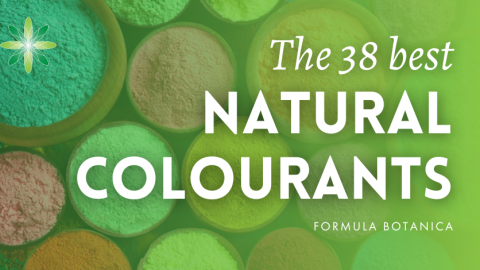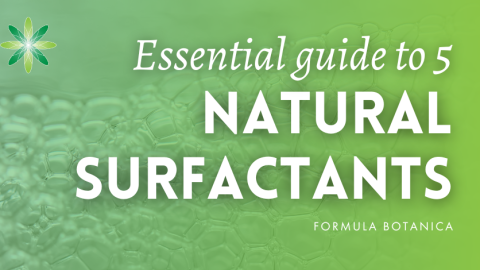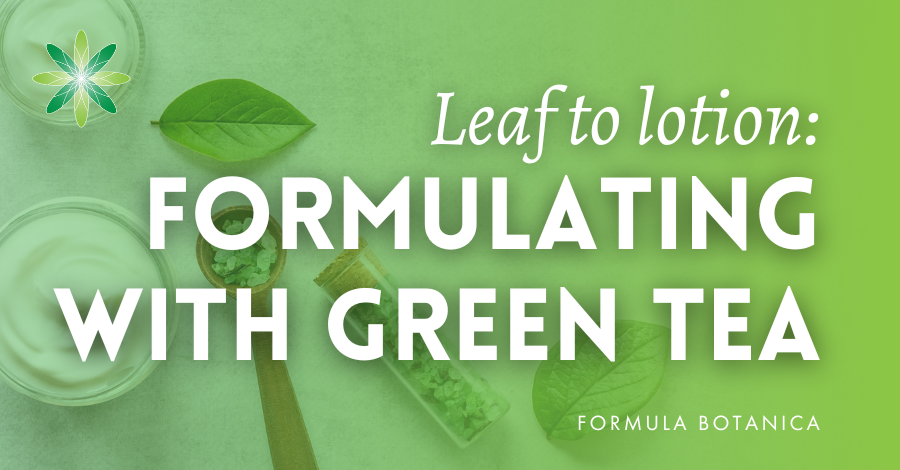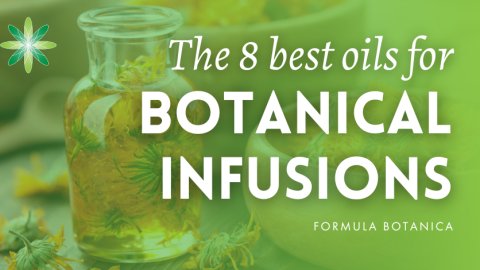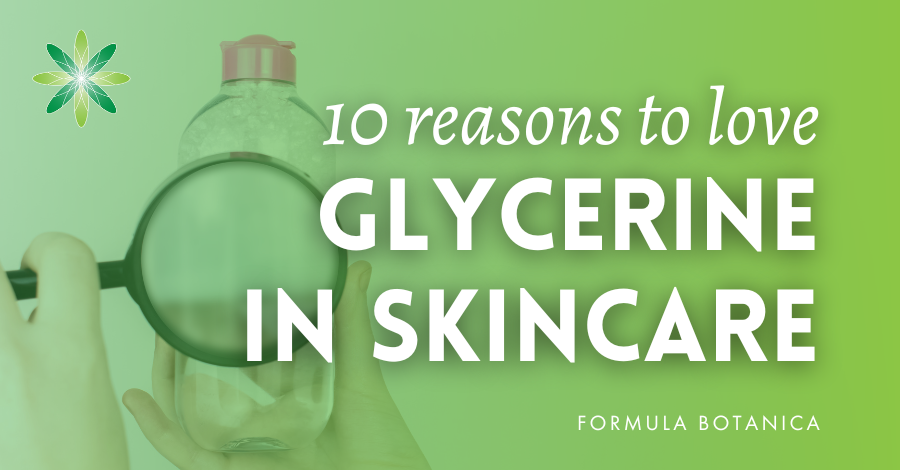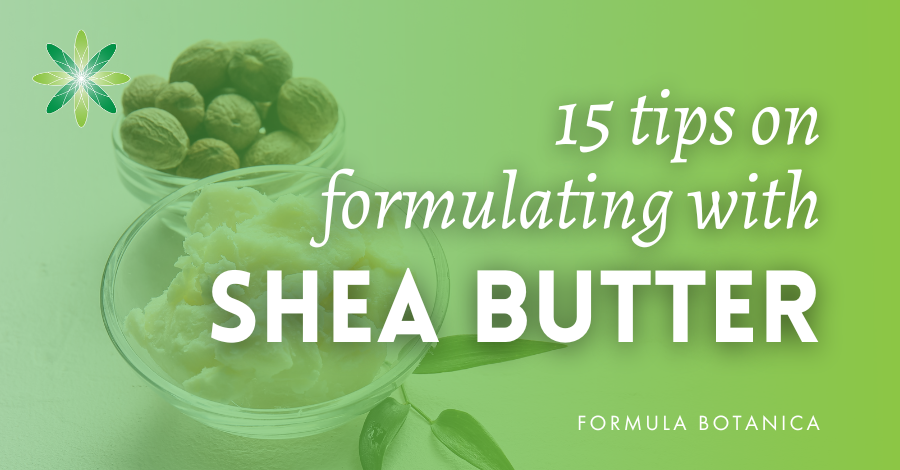“How is this formulation preserved?” is one of the questions I’ve received most frequently in all my years of working in organic skincare formulation. And it’s not surprising, given the complexity of some of the skincare (and haircare) formulations on the market, as well as their lengthy list of ingredients on the label.
Here at Formula Botanica, we host a thriving community of skincare formulation students in our online classroom on Facebook. Almost every week we see one of our students post up a list of ingredients of a water-containing formulation they’ve found for sale somewhere, together with the question “how is this formulation preserved?”.
In this case, cosmetic preservatives are often absent from the list of ingredients, which leaves our responsible formulators totally puzzled because they cannot figure out how this seemingly professional formulation is safe to use. We’re proud of our students for questioning and challenging, which is why I’ve created this blog post to help them out.
This question has two possible answers, which I’m going to run through in this blog post.
Answer 1: It’s not.
This answer gives me shivers, but we all know it’s possible.
I once found myself talking to an online brand in the USA that proudly sold its water-based baby range without the use of any preservatives. They told me they used Vitamin E, which is an antioxidant and not a preservative.
To say I was horrified was an understatement. I rarely make it my business to police the internet for unpreserved cosmetics (otherwise I would probably never sleep) but in this case I had to speak out and say something to the brand owner. I don’t think she liked me very much after that. (Read: can your cosmetics kill you?)
Over the years I’ve seen quite a few formulations for sale on websites, on market stalls and in online marketplaces, where the owner has proudly declared that their formulations are unpreserved. I’m sure you have too.
It is worth mentioning here that all companies have a moral (and in most countries, legal) obligation to sell safe cosmetics, wherever they are in the world. In the EU, a safety assessor will ask you to provide the challenge test results of your formulation to demonstrate that it’s safe for its predicted shelf life in its final packaging.
Answer 2: It is, but the label doesn’t declare the preservatives.
Some brand owners have got it into their heads that it’s better not to declare the preservatives in their formulation on the label, so they don’t include them in the ingredients listing. I’m not just talking about indie brands either, I’m also including some larger brands in this line-up.
Consumers have been told many times that preservatives are really bad for them and should be avoided at all costs. Formula Botanica does not agree with this statement and we are strongly of the opinion that formulators should be proud of preservation. Preservatives protect you, your formulation, your business and your customer. Enrol for our Certificate in Natural Cosmetic Preservation to learn more.
Formulators should be proud of natural cosmetic preservation - preservatives protect your formulation, your business and your customer. Share on XNonetheless, I can sort-of see the warped logic behind wanting to make a responsible formulation but not inform your customer about your choices. This happens a lot, particularly in the USA where labelling regulations are not policed rigorously by enforcement agencies and no sign-off is formally required by safety assessors, such as the checks mandated by the EU Cosmetics Regulations.
I then often see formulators say that a full declaration of ingredients is not legally required in the USA, but this is not true.
Full ingredient declaration is required in the USA
If you include an ingredient in your formulation, then it must be declared on the label in descending order of percentage. Ingredients present at a concentration not exceeding 1% may be listed in any order after the listing of the ingredients present at more than 1% in descending order of predominance.
There is one exception to this rule and that applies if you have an ingredient which is deemed to be a ‘trade secret’. US cosmetic labelling regulations do not require the declaration of the identity of an ingredient the FDA has accepted as exempt from public disclosure.
In lieu of the declaration of the name of a confidential ingredient, the phrase “and other ingredients” may then be used at the end of the ingredient declaration.
In other words, even if a brand is withholding the preservative as part of a trade secret, it still has to add the words ‘and other ingredients‘ to the end of the ingredient list. Did the ingredients list you were reviewing contain these 3 words? I didn’t think so.
The reason for that is the chance of being granted a trade secret exemption is very slim. To quote the FDA from their website:
Be aware that it’s unlikely that FDA will grant your request. We’ve received only a handful of trade secret requests in the last 20 years and have granted such a request only once.
Answer 3: It is, through a complex blend of different compounds or techniques.
I said there were only two answers, but there are of course multiple answers to this question.
Sometimes you might not recognise the name of the preserving compounds and need to do slightly more research. Sometimes the formulation doesn’t contain or come into contact with water. Sometimes the formulator has done something clever (and risky), such as reducing water activity whilst relying on the antimicrobial functionality of certain ingredients. Sometimes the formulation has a really short shelf life and relies on hurdle technology to get it through that (very) short period. Sometimes the manufacturer uses a bespoke concoction of preserving compounds which they have managed to lump under the ‘Parfum’ INCI name.
There is of course never a straightforward answer, but in my experience it is generally either answer 1 or 2. Any company choosing option 1 or 2 should make sure that they have the legal and financial assets in order to deal with the consequences of selling unsafe cosmetics or breaking the law.
I’m sure you’ll agree with me that this is not the best way to build trust with your customers. We strongly encourage you to always make sure your formulation is safe and declare your ingredients in full.
So next time someone says “how is this formulation preserved?”, remember that you’ll never know for sure unless you either ask the brand (and be prepared for some crazy answers from the brand’s marketing team!) or undertake your own spot test.
We love undertaking microbial spot tests of formulations at Formula Botanica and frequently stick a testing kit in some of the products that are sent to us by brands. Don’t ever be scared to challenge and test. Remember: this is the sign of a good formulator. (Read: Everything you wanted to know about Natural Preservatives)
Which formulations are you most confused by in terms of preservation? Leave us your most puzzling ingredients’ lists below!
FREE TRAINING
Learn how to become an
Organic Skincare FormulatorFREE TRAINING
How to become an
Organic Skincare EntrepreneurFREE TRAINING
How to become an
Organic Skincare Entrepreneur
Leave us a comment
Lorraine Dallmeier is a Biologist, Chartered Environmentalist and the CEO of Formula Botanica, the award-winning online organic cosmetic science school. Read more about Lorraine and the Formula Botanica Team.


